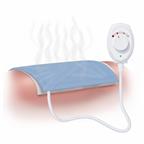ThisisPatientEngagementcontent
Acute Pain, Pediatric
Learn more about our Patient Engagement products now! Turn your patients into active participants in their healthcare by giving them easy access to the same evidence-based information you trust – but delivered in an easy-to-understand format.
Acute pain is a type of sudden pain that may last for just a few days or for as long as three months. It is often related to an illness, injury, or a medical procedure. Acute pain may be mild, moderate, or severe.
Pain can make it hard for your child to do their daily activities. It can cause anxiety and lead to other problems if it is not treated. Treatment may not take all the pain away, but it may lessen the pain so your child can move around and tolerate it. Treatment depends on the cause of the pain and how severe it is. Acute pain usually goes away once your child's injury has healed or your child is no longer ill.
Medicines

Managing pain, stiffness, and swelling


Managing constipation
Your child's medicines may cause constipation. To prevent or treat their constipation, you may need to have your child:Activity
General instructions
These symptoms may be an emergency. Do not wait to see if the symptoms will go away. Get help right away. Call 911.
This information is not intended to replace advice given to you by your health care provider. Make sure you discuss any questions you have with your health care provider.
Cookies are used by this site. To decline or learn more, visit our cookie notice.
Copyright © 2025 Elsevier, its licensors, and contributors. All rights are reserved, including those for text and data mining, AI training, and similar technologies.